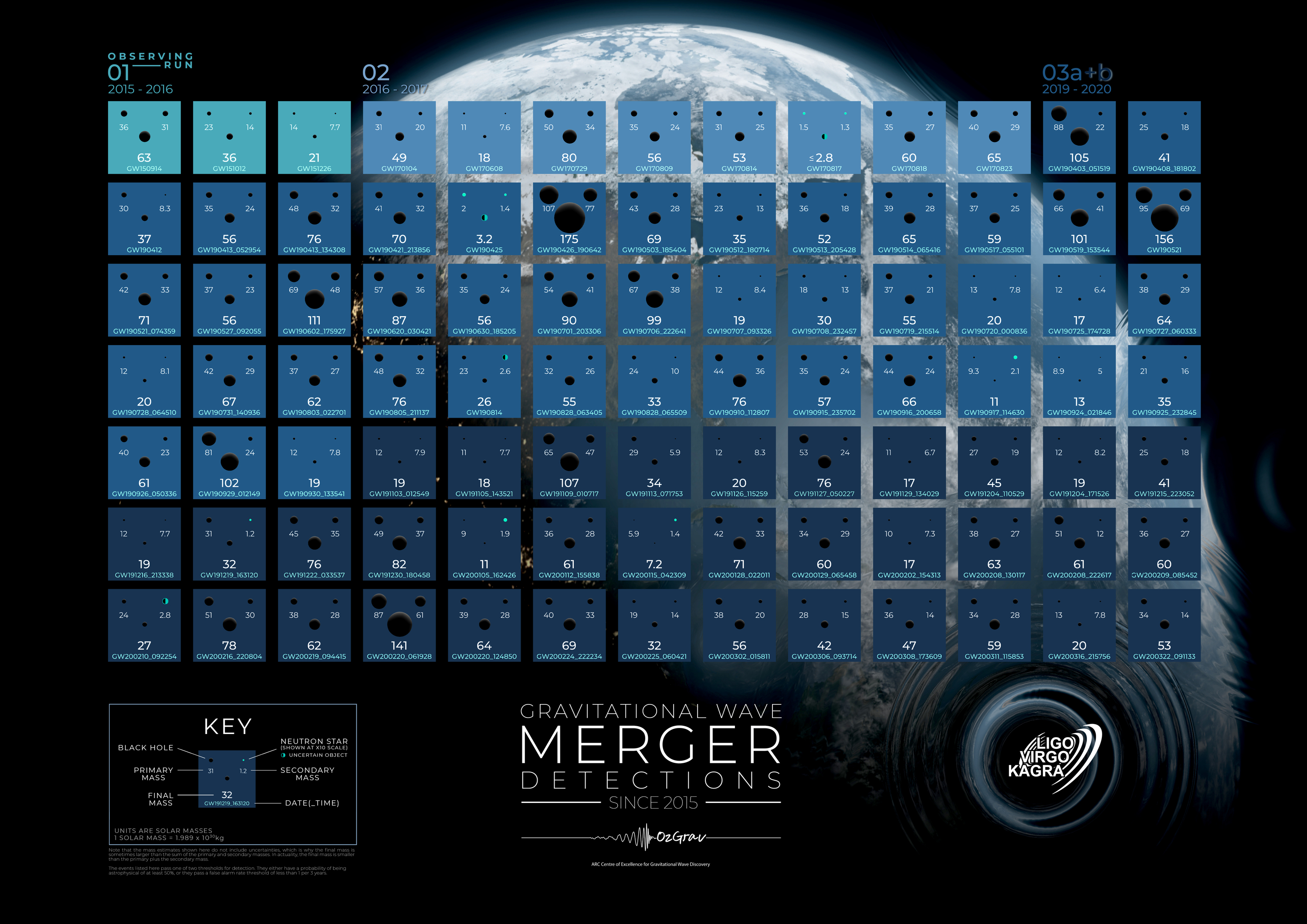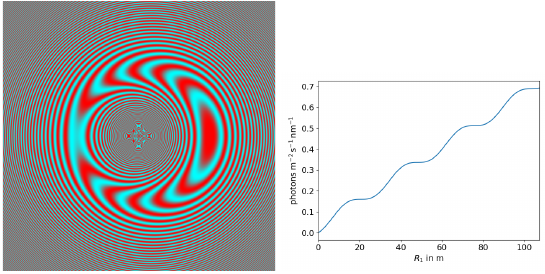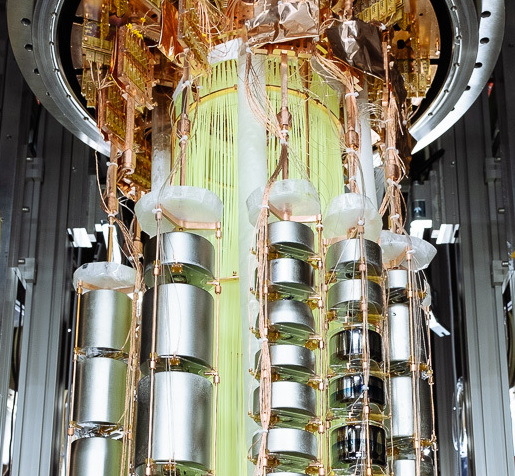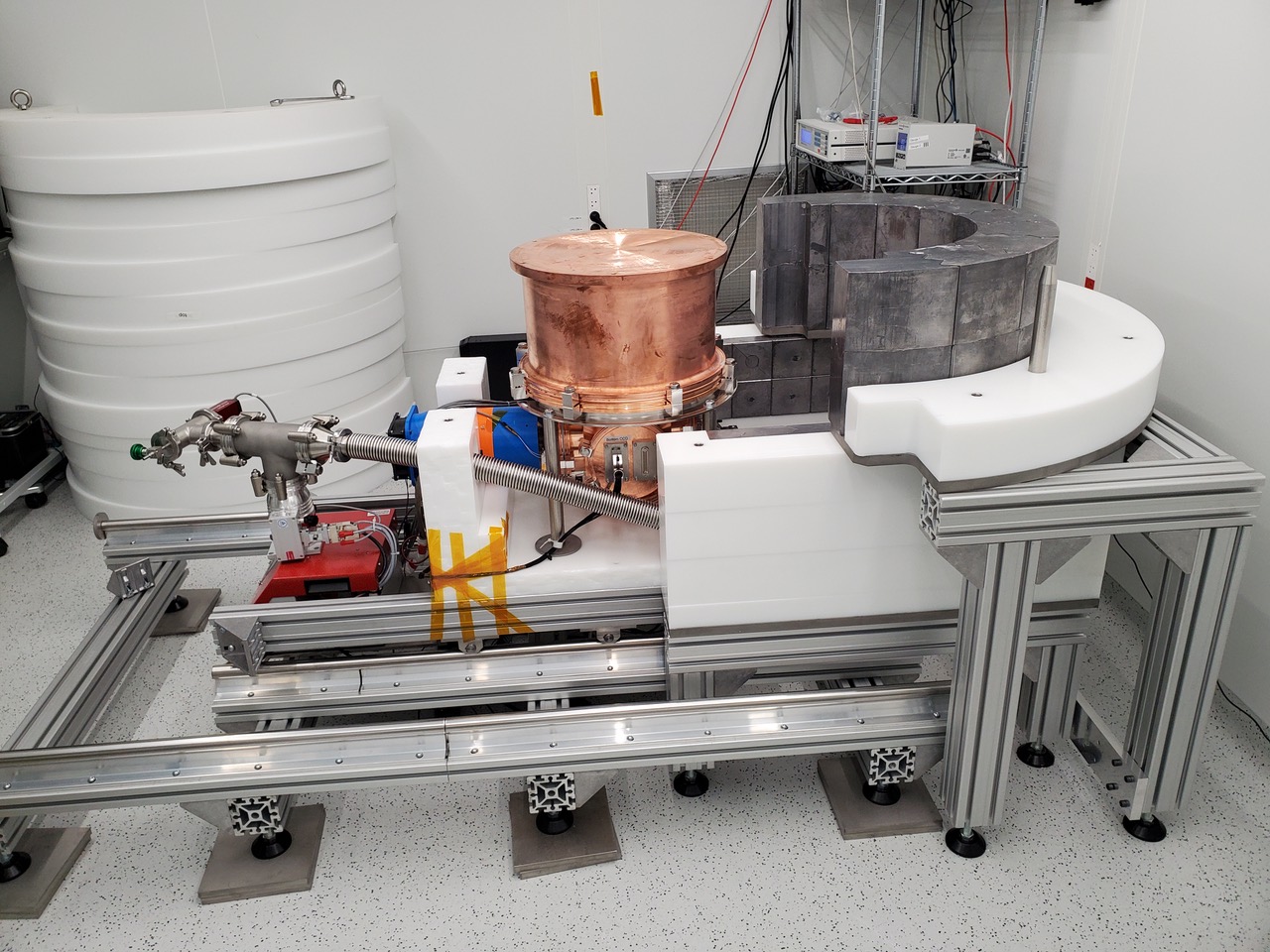Cosmology, Astro- and Astroparticle Physics
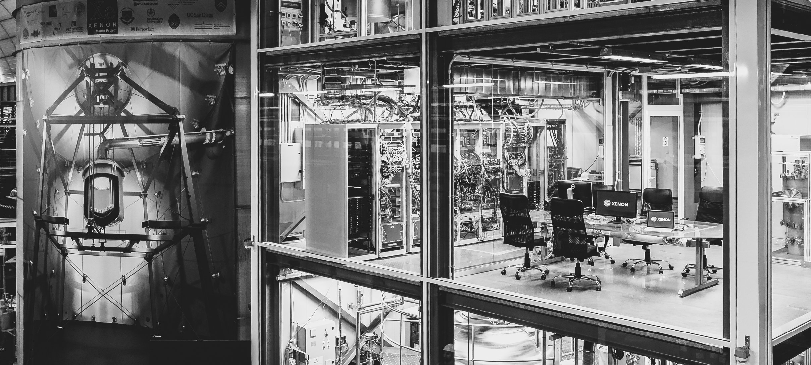
Table of contents
Prof. Philippe Jetzer - Astrophysics and General Relativity
LIGO (Laser Interferometer Gravitational-Wave Observatory) consists of two Earth-bounded instruments together with Virgo aimed to detect gravitational waves in the frequency range from about 10 to 1000 Hz. In 2015 the first gravitational wave signal has been detected. Since then about 90 events have been found. Our group has made important contributions to the analysis of LIGO/Virgo data and in the modelling of more accurate gravitational waveforms. The latter results will be used in LIGO/Virgo and for the future LISA mission and the Einstein Telescope project.
The work of the group is focused on the topic of gravitational waves in the framework of the LIGO Scientific Colaboration and for the future space mission LISA, since our group is involved in both these international collaborations.
In the following we briefly describe some results published in 2022, besides all the works appeared in the framework of the LIGO/Virgo, LISA Pathfinder and LISA collaborations.
P. Jetzer being co-chair of the LISA Fundamental Physics Working Group (FPWG) coordinated the writing of the LISA Fundamental Physics white paper. This paper provides the briefest of reviews to then delineate avenues for future research directions and to discuss connections between the FPWG, other working groups and the consortium work package teams.
Dense astrophysical environments like globular clusters and galactic nuclei can host hyperbolic encounters of black holes which can lead to gravitational-wave driven capture. There are several astrophysical models which predict a fraction of binary black hole mergers to come from these radiation-driven capture scenarios. M. Ebersold, S. Tiwari and collaborators studied the sensitivity of a search toward gravitational-wave driven capture events for the third observing run of LIGO and Virgo.
Neutron stars are known to show accelerated spin-up of their rotational frequency called a glitch. A glitch in an isolated neutron star can excite the fundamental (f )-mode oscillations which can lead to gravitational wave generation. This gravitational wave signal associated with stellar fluid oscillations has a damping time of 10 - 200 ms and occurs at the frequency range between 2.2 - 2.8 kHz for the equation of state and mass range considered in the work of D. Lopez, S. Tiwari and collaborators. Electromagnetic observations of pulsars (and hence pulsar glitches) require the pulsar to be oriented so that the jet is pointed toward the detector, but this is not a requirement for gravitational wave emission which is more isotropic and not jetlike. Hence, gravitational wave observations have the potential to uncover nearby neutron stars where the jet is not pointed towards the Earth. The prospects of finding glitching neutron stars using a generic all-sky search for short-duration gravitational wave transients have been studies in this work. The prospects of localizing the direction in the sky of these sources with gravitational waves alone, which can facilitate electromagnetic follow-up, is discussed as well.
Figure: Gravitational-wave merger detections since 2015. Credit: Carl Knox, OzGrav, Swinburne University of Technology.
Highlighted Publications:
1. New horizons for fundamental physics with LISA, K. G. Arun et al., Living Rev. Rel. 25 (2022) 1, 4, arXiv:2205.01597.
2. Observational limits on the rate of radiation-driven binary black hole capture events, S. Tiwari et al., Phys. Rev. D106 (2022), 104014, arXiv:2208.07762.
3. Prospects for detecting and localizing short-duration transient gravitational waves from glitching neutron stars without electromagnetic counterparts, E. Hamilton et al., Phys. Rev. D106 (2022), 103037, arXiv:2206.14515.
Prof. Prasenjit Saha - Theoretical Astrophysics
Our research has been on diverse astrophysical phenomena involving light and gravity, especially gravitational lenses, but also novel applications of spacecraft ranging.
Galaxies that create multiple mirages of background galaxies through gravitational lensing have long been understood as a probe of dark matter and indeed the process of galaxy formation. We have continued our long-running research in this area, and recently have contributed to a very futuristic applications of gravitational lensing, namely the so-called solar gravity lens (see Figure).
In other work we have studied the sensitivity of deep- space spacecraft to local dark matter.
Figure: Simulations of the view from a spacecraft at 600 au, through the solar gravitational field. Left panel: interferences fringes. Right panel: photon flux at 1 nm from a uniform-brightness disc of radius R1 at 1.3 pc emitting 1 W m−2 nm−1 .
Highlighted Publications:1. Optical properties of the solar gravity lens, S. Engeli, P. Saha, MNRAS 516, 4679–4683 (2022)
2. Prospects for a local detection of dark matter with future missions to Uranus and Neptune, L. Zwick, D. Soyuer, J. Bucko, A&A 664, A188 (2022)
Prof. Prasenjit Saha, Prof. Nico Serra - CTA – Cherenkov Telescope Array
The Cherenkov Telescope Array (CTA) is a next-generation facility to observe high-energy sources in the Milky Way and beyond. It is designed especially for gamma-ray photons from 10 GeV to above 100 GeV, which it will detect indirectly, through optical Cherenkov showers in the atmosphere. Fortuitously, the facility will also have the capacity to operate in a completely different mode, as an optical intensity interferometer, which can image stellar-scale phenomena.
Figure: Simulations of intensity interferometry with the Cherenkov Telescope Array. The left panel shows a fictitious image of Proxima Centauri (a spoof) which however mimics convection cells on the stellar surface. The middle panel shows the interferometric signal of a uniform disk. The right panel shows the interferometric signature of the surface structure, and representative sampling by the CTA.
Highlighted Publications:
1. Simulations of astrometric planet detection in Alpha Centauri by intensity interferometry, K. N. Rai, S. Sarangi, P. Saha, S. Basak,MNRAS 516, 2864–2875 (2022)
Prof. Laura Baudis - Astroparticle Physics Experiments
We study the composition of dark matter in the Universe and the fundamental nature of neutrinos. We build and operate ultra low-background experiments to detect dark matter particles, to search for the neutrinoless double beta decay, a rare nuclear process which only occurs if neutrinos are Majorana particles.
We are members of the XENON collaboration, which operates xenon time projection chambers to search for rare interactions such as from dark matter, and we lead the DARWIN collaboration, with the goal of building a 50 t liquid xenon observatory to address fundamental questions in astroparticle physics.
We are members of the GERDA and LEGEND experiments, which look for the neutrinoless double beta decay of 76 Ge in high-purity Ge crystals immersed in liquid argon, with an unprecedented sensitivity.
Highlight: LEGEND
The LEGEND experiment aims to probe the neutrinolessdouble beta decay of 76 Ge with a half-life sensitivity beyond T 1/20ν > 1027 y. Based on the very successful GERDA concept, it employs enriched, high-purity detectors operated directly in liquid argon (LAr). An observation of this hypothetical, ultra-rare process could shed light on the imbalance between matter and antimatter in our Universe and on the nature of neutrinos, i.e. whether they are their own antiparticles. Located underground at the Laboratori Nazionali del Gran Sasso, the first phase of the project, LEGEND-200, operates an array of around 200 kg of high-purity germanium detectors isotopically enriched to 90% in 76 Ge. The array is submersed in a 64 m3 cryostat filled with LAr. To collect the vacuum ultraviolet scintillation light from LAr, the volume around the Ge detector arrays is instrumented with wavelength-shifting fibres, which are coated with the WLS compound tetraphenyl butadiene (TPB). The TPB absorbs the VUV light and shifts it to the visible region. The cryostat is surrounded by a 590 m3 water tank, acting as a water Cherenkov veto against cosmic muons and also as passive shielding against external radiation coming from the laboratory walls. In the next stage of the project, LEGEND-1000, more than 1000 kg of detector material will be operated, with a sensitivity goal of T ½ 0ν >1028 y.
Figure: A partial view of the LEGEND-200 high-purity germanium detector array and with the optical fibres and cold electronics.
The stability of the energy response, the energy resolution, and the pulse shape performance of the high-purity Ge detectors must be regularly calibrated with 228 Th sources, which emit several gamma-rays in the vicinity of the Q-value of the decay. The source insertion systems were designed and built at UZH, while the custom-made, low neutron emission sources were produced by our collaborators at Los Alamos, New Mexico, following our previous design for GERDA. Our group lead the characterisation measurement and the consecutive analysis of the neutron flux emitted by the 228 Th sources, a crucial parameter for their deployment in LEGEND-200. Source-induced neutrons could activate the 76 Ge, and the subsequent beta-decay of 77 Ge could mimic a signal in the region of interest. Our work revealed only a negligible expected contribution to the background, which will not affect the sensitivity of the experiment [1]. LEGEND-200 recently started its first science run, and the radioactive sources are regularly deployed in the vicinity of the detector array using our source-insertion systems.
Highlighted Publications:
1. Calibration sources for the LEGEND-200 experiment, L. Baudis et al.,JINST 18 (2022) P02001
2. Search for New Physics in Electronic Recoil Data from XENONnT, XENON Collab., Phys. Rev. Lett. 129 (2022) 161805
3. A next-generation liquid xenon observatory for dark matter and neutrino physics, J. Aalbers et al., J.Phys.G 50 (2023) 1, 013001
Prof. Ben Kilminster - DAMIC Experiment
DAMIC-M (Dark Matter in CCDs at Modane Underground Lab) is an experiment that searches for the dark matter gravitationally bound in our Milky Way through electrical signals produced from its collisions with silicon CCD detectors. This experiment represents a factor of 10 increase in mass, a factor of 10 decrease in the energy threshold, and a factor of 50 decrease in background rates, as compared to the current DAMIC experiment operating in SNOLAB.
Our group helped found the DAMIC experiment in 2008. We are contributing mechanical components, detector control and safety systems, and readout electronics for the next phase, DAMIC-M. In 2022, we collected data with a prototype DAMIC-M detector, and tested unexplored dark matter candidate parameters. The UZH group is also working on new methods of detecting dark matter by measuring the radiation damage caused by nuclear interactions on CCDs.
Figure: The very good resolution of the CCD detectors allows a dark matter signal that only produces a few electrons to be observed above background. This allows new constraints on the existence of DM with masses between 1 and 1000 MeV/c2 .
Figure: The dismantled prototype DAMIC-M experiment, showing layers of polyethylene, lead, and copper shielding. The CCDs are housed in the copper cryostat, with some components produced by UZH.
Highlighted Publications:
1. First Constraints from DAMIC-M on Sub-GeV Dark-Matter Particles Interacting with Electrons, DAMIC-M collaboration, https://inspirehep.net/literature/2629764 , accepted by PRL.
2. Analysis of radiation damage in silicon charge-coupled devices used for dark matter searches Steven J. Lee for the DAMIC-M Collaboration 14th International Workshop on the Identification of Dark Matter 2022.

